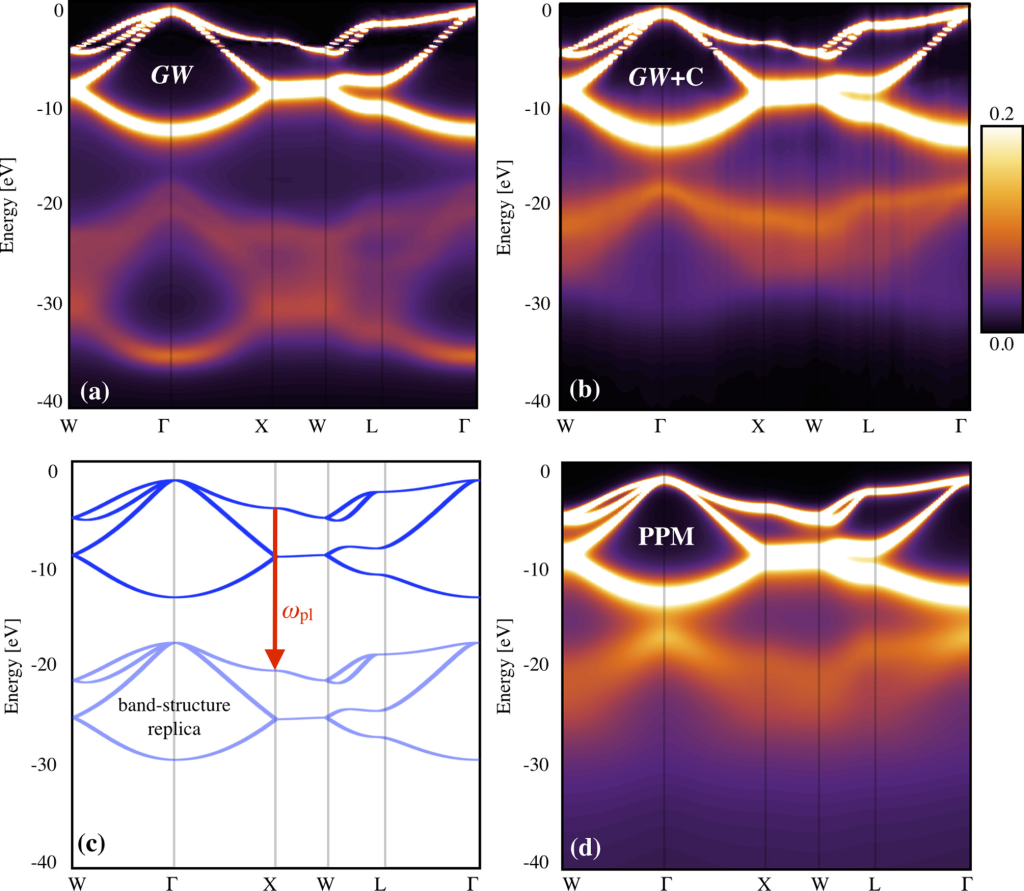This website uses cookies to ensure a better user experience.
To get more information, please read our Cookie Statement.
Quasiparticle spectra calculated by the combined use of GW approximation and cumulant expansion
Together with his collaborators from Zagreb and Oxford, Branko Gumhalter has published a paper in Physical Review B on a new framework for calculating electron spectra in crystals which systematically and consistently combines the so-called GW approximation and the cumulant expansion.
On the combined use of GW approximation and cumulant expansion in the calculations of quasiparticle spectra: The paradigm of Si valence bands
B. Gumhalter, V. Kovač, F. Caruso, H. Lambert, F. Giustino
Physical Review B 94, 035103 (2016).
doi: 10.1103/PhysRevB.94.035103
Calculating electron/hole spectra in crystalline bodies (metals, semiconductors and other dielectrics) is one of the central problems in many-body theory. To that goal two methods have been used extensively. The first is the so-called GW approximation (GWA) which is used to renormalize the self-energy of the propagator related to the relevant quasiparticles. It is commonly applied in the inverse, frequency domain and directly results in spectra. The second method is the cumulant (C) expansion of propagators in time domain which are then transformed back into the frequency domain. Each of these two methods have their own advantages and disadvantages. For example, GWA describes the main spectral lines nicely but fails to predict the inelastic satellite structures. These on the other hand seem to be captured rather well by the cumulant expansion approach. Using the GWA spectra as input for cumulant expansion, the so-called GWA+C, would have been advantageous and a natural next step, especially in the wake of powerful numeric algorithms available for GWA spectra calculation. However, in spite of many attempts until now no formal connection between the two methods has been found which would allow a consistent GW+C theory.
In the recent paper published in Physical Review B, Branko Gumhalter from Instituta za fiziku and Vjekoslav Kovač from University of Zagreb, Faculty of Science, Department of Mathematics together with their collaborators from Oxford University introduced a general bijective integral representation of the cumulants in order to identify at which levels of approximation it is possible to formally connect the GWA and cumulant expansion. As a demonstration of the power of the new framework, it has been applied to investigate the effects of electron interactions with the charge density fluctuations in the spectral function of silicon.

Spectral function of silicon (in 1/eV) evaluated using (a) the G0W0 approximation, (b) the G0W0 + cumulant (G0W0 + C)
approach, (c) DFT-LDA, and (d) the plasmonic polaron model (PPM). For comparison, in panel (c) a replica of the DFT-LDA band structure was redshifted by the plasmon energy ωpl.




